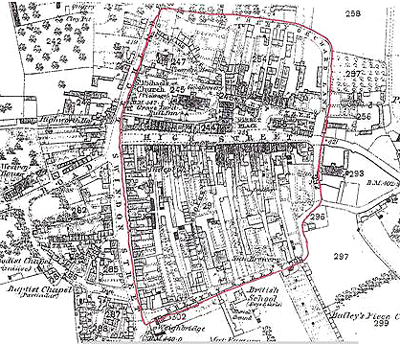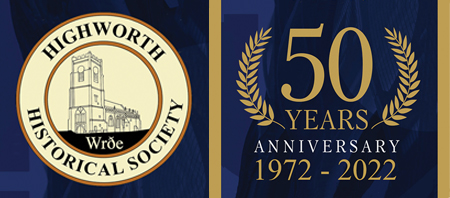History of Highworth
The ancient hill-top town of Highworth occupies a pre-eminent position above the Upper Thames valley, standing 133 metres or 436 feet above sea level it is the highest town in Wiltshire. It appears to have seen almost continuous occupation for 4000 years. Archaeological evidence of Mesolithic, Neolithic, Bronze Age, Roman, Romano British, and Saxon remains have been found on and around its hill top.
During the 6th century the area was settled by the Saxons and by the late Saxon period the sub-divisions of the shires, the hundreds (including the hundred of Worth), had been established. Their main purpose was to maintain local law and order through the hundred courts which were held every three to four weeks. Many hundreds were known from their meeting places, often on royal estates, many of which show signs of some antiquity, such as fords, crossroads, barrows, famous trees or prominent hills.
 The name ‘High Worth’, applied to the hundred was in use before 1300 but more often it was simply called the hundred of Worth. ‘Worth’ was in fact the name used for the area containing not only Highworth but also Sevenhampton, Eastrop, Westrop, Hampton and South Marston. Highworth itself refers strictly to the hill-top area on which stand the church and market town, bounded by Brewery Street, Swindon Street, the upper part of Lechlade Road and Cherry Orchard Lane. Its name derives from the Old English ‘worth’, a common term for a settlement, probably an ‘enclosed settlement’ or a relatively small enclosure. This may refer to the ancient meeting place of the hundred.
The name ‘High Worth’, applied to the hundred was in use before 1300 but more often it was simply called the hundred of Worth. ‘Worth’ was in fact the name used for the area containing not only Highworth but also Sevenhampton, Eastrop, Westrop, Hampton and South Marston. Highworth itself refers strictly to the hill-top area on which stand the church and market town, bounded by Brewery Street, Swindon Street, the upper part of Lechlade Road and Cherry Orchard Lane. Its name derives from the Old English ‘worth’, a common term for a settlement, probably an ‘enclosed settlement’ or a relatively small enclosure. This may refer to the ancient meeting place of the hundred.
Between the 11th century and 1194 the separate hundred of Scipe, known only from the Geld Rolls, was merged with Worth. Later the hundreds of Staple and Cricklade were added. The hundred then came to include an area in the north-east corner of Wiltshire, largely bounded by the rivers Thames, Cole and Ray, comprised of thirty tithings. The hundred was attached to the large manor of Sevenhampton in the 13th century at some point before 1255.
Such evidence that does exist of the early history of the hundred reveal that it belonged to the manor of Sevenhampton and that the association was of ancient origin. A manor to which a hundred belonged was likely to have already been the royal manor of a large estate at the time of Domesday. Sevenhampton’s history cannot be traced continuously back to Domesday, but there are indications that the Crown had the manor in 1086. Sevenhampton, the rest of Highworth, Eastrop, Westrop, South Marston and Inglesham are not mentioned in Domesday although all the rest of the hundred is accounted for. It therefore appears that these places formed part of the royal estate mentioned in the Geld Rolls of 1084.


